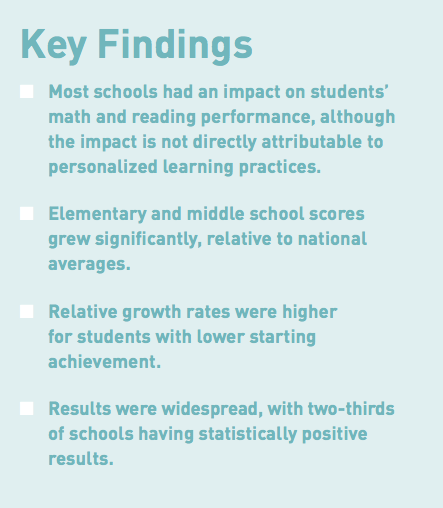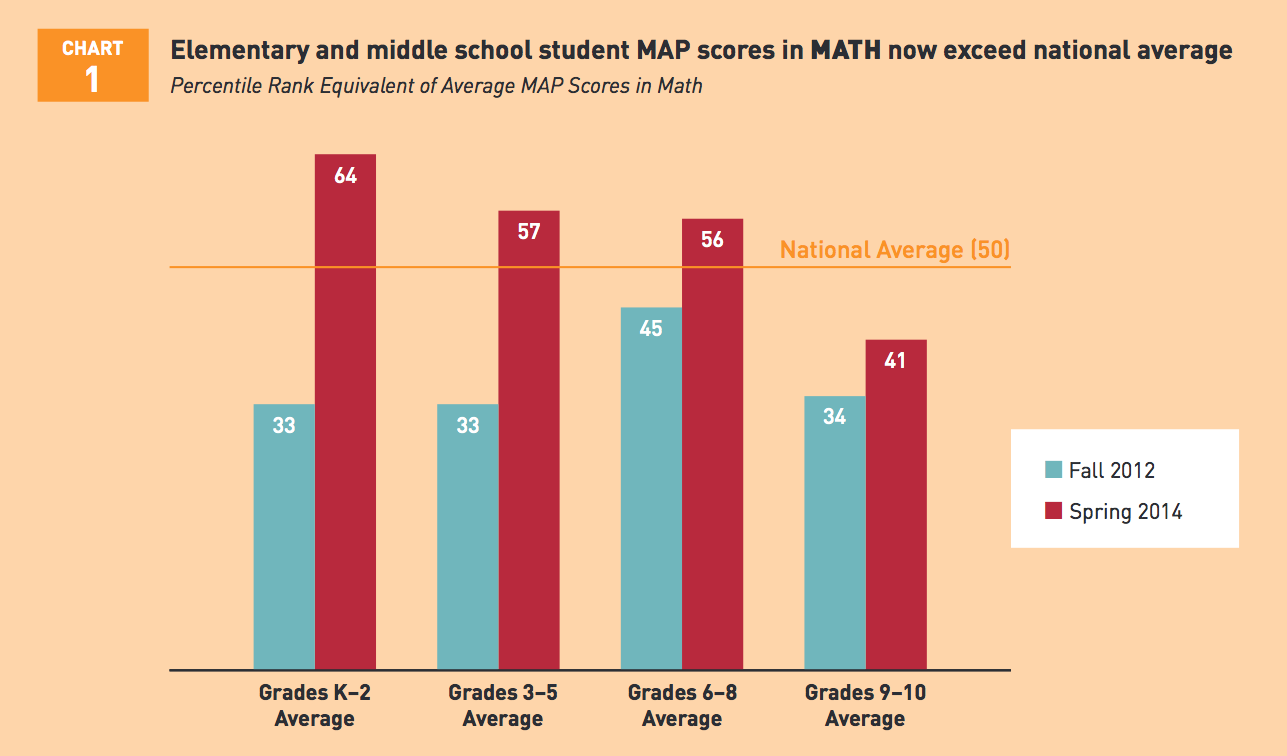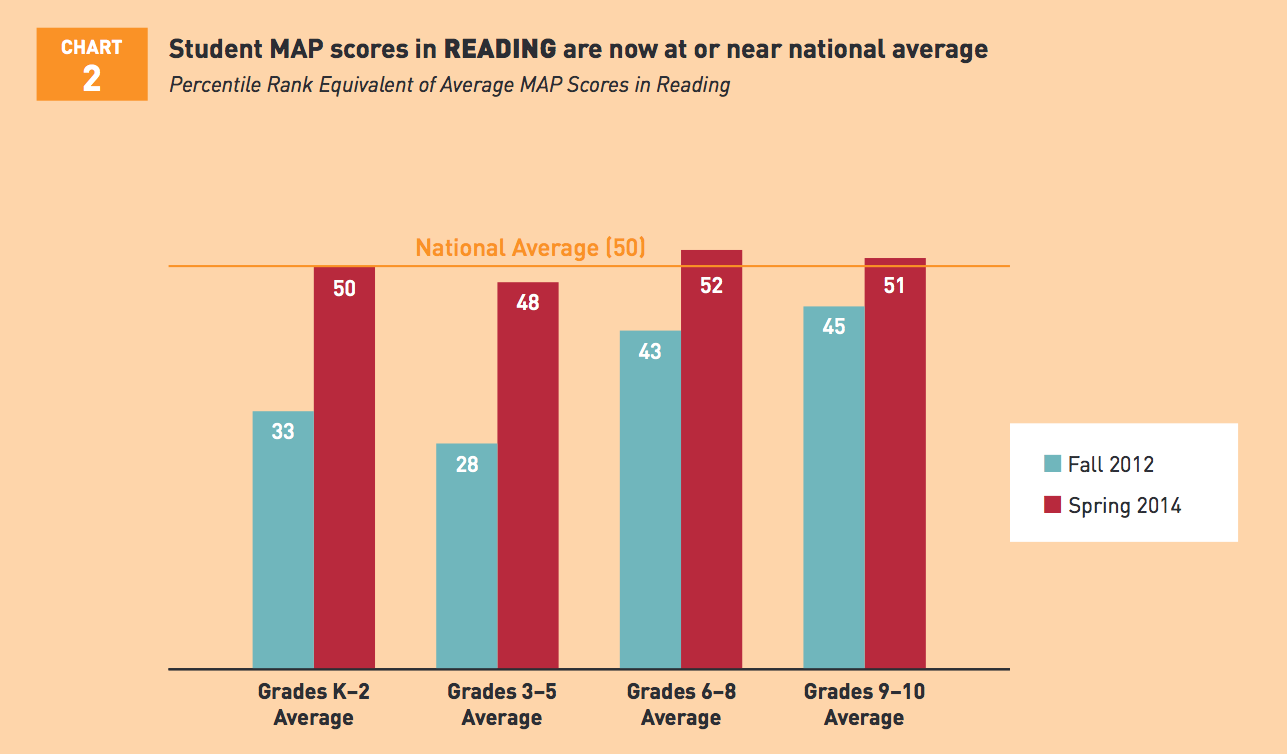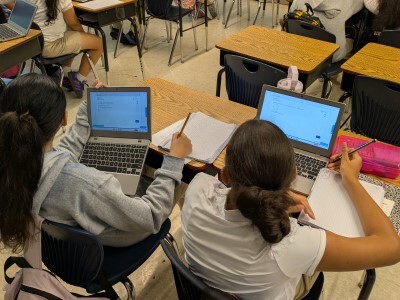Personalized Learning is Promising
Topics

We’ve all had the experience of truly purposeful, authentic learning and know how valuable it is. Educators are taking the best of what we know about learning, student support, effective instruction, and interpersonal skill-building to completely reimagine schools so that students experience that kind of purposeful learning all day, every day.
How well do students perform in blended, competency-based, personalized learning schools? Kristen Vogt breaks down the findings from a recent research report by the RAND Corporation.
Last month, the RAND Corporation released interim research findings on personalized learning schools, including schools in the NGLC network. (The other schools are from the Charter School Growth Fund’s Next Generation School Investments, and the Gates Foundation’s Personalized Learning Pilots).
The results are promising.
Like any good research report, there’s a lot to digest in Early Progress: Interim Research on Personalized Learning. My goal is to break it down for you and connect their findings to other things we know about NGLC schools. I throw in some of my own subjective commentary, so consider this an op-ed, not a book report.
I’ll start with the quantitative outcomes: How well do students perform in blended, competency-based, personalized learning schools?
With two years of data on 5,000 students in 23 public charter schools, here’s what RAND tells us (on page 15):

1. Achievement gains in math and reading
The two-year gains in math and reading on the NWEA’s MAP (Measure of Academic Progress) were significantly greater for students in the schools in the study than for a control group of similar students from similar schools.
For research geeks like me, the effect sizes—a standard measure of impact—were large: 0.41 in math and 0.29 in reading. An effect size of 0.41, says RAND, is equivalent to moving a student from the 50thpercentile to the 66th percentile. In other words, these achievement gains have substance.
All good research has cautions and caveats, and this one is no exception. The report warns that, “The impact is not directly attributable to personalized learning practices.” The researchers expect that future reports from their ongoing study will offer insight into which educational practices are related to positive learning outcomes.
The growth in math and reading really is promising, but these results don’t shed any light on student achievement in other subject areas—what about science, social studies, or development of social and emotional learning?
2. Meeting and exceeding national benchmarks
The report summarizes that, “students generally ended the school year with both math and reading test scores above or near the national average, after having started the school year generally performing below the national average.” The only exception was high school students’ math scores, which remained below the national average after the second year. (The charts below are pulled from page 17 of the report and show the gains by grade level.)
This finding suggests to me that these schools are closing the income and racial achievement gaps, since they are urban schools serving predominantly students of color (86%) and predominantly low-income students (87%). I find that extremely promising. But it looks like that may be easier to accomplish in the lower grades—earlier on in students’ academic careers— than in high school.


3. Greatest relative growth for lower-achieving students
Students with lower scores at the start of the study experienced greater relative gains in their achievement than students with higher scores did. Three quarters of students in the lowest group of achievement at the start of the study experienced greater than average growth in math and reading.
The report doesn’t go into more detail on this topic and I wish it did. I’d love to see additional study of the ways that personalized learning schools serve students at different achievement levels. Isn’t that the promise of personalized learning?
4. Widespread positive outcomes
The level of growth in MAP scores varied across the 23 schools. With the overall effect size at 0.41, there were two schools in the study with negative effects in math and one in reading, and some schools with no effects at all. But two-thirds of schools had statistically positive effects on student learning.
I definitely find this outcome promising because these schools have not adopted the same model. Even among NGLC schools, their academic and organizational models approach a common set of Personalized Learning School Design Attributes in unique ways. It’s understandable that outcomes will vary, and the trend toward positive outcomes raises hope that these schools are headed in the right direction.
Characteristics of Personalized Learning Schools
The Early Progress report does describe school design characteristics and teachers’ and students’ perceptions of the schools, but isn’t able to connect them (yet) with the student achievement results. We’ll all just have to wait for that evidence. The findings around school design and teacher and student perceptions are insightful in their own right, however, and I’ll explore those in a future post.
- Read Early Progress: Interim Research on Personalized Learning.
- And get a different perspective on NGLC schools with Lighting the Path to Personalized Learning: Inspiring Stories from Next Gen Schools, a narrative tour of 11 schools through the lens of the Personalized Learning School Design Attributes.




